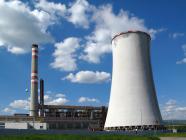Lowering the Temperature on the Mercury Pollution Rules
Minnesota may be a national model

The Obama administration’s efforts to reduce
mercury pollution from coal plants has become one of
its most contentious undertakings. But Minnesota’s
regulatory officials are saying that they may have
found the key -- one that has built consensus and
that could become a national model.
Minnesota says that it has cut its mercury emissions
by more than half since the state had mandated that
utilities operating within its borders abide by its
rules. In the mid 1990s, the
Minnesota Pollution Control Agency says that
mercury emissions from coal plants totaled 1,850
pounds per year. Today, they are about 870 pounds.
By 2016, they will be about 200 pounds.
“Mercury emissions from this sector are now at less
than half of where we started a little mover a
decade ago,” says John Stine, commissioner at the
agency. “And our power utilities are well ahead of
their scheduled reductions laid out in the Minnesota
Reductions Act of 2006.” He goes on to say that 90
percent of the mercury that ends up in the state’s
air and water comes from elsewhere.
The subject of mercury has become a rallying cry for
both the industrial and environmental movements. No
argument exists that the insidious nature of the
pollutant is deleterious and harmful. The two sides
diverge, however, over the methods to reduce that
release, with greenies supporting the White House’s
current mandatory efforts while coal-fired utilities
are saying that such moves are too aggressive and
that they need more time to comply.
The Obama administration says that it is following
court orders by enacting rules to cut mercury
pollution. On December 21, 2011, its Environmental
Protection Agency acted to fulfill its obligation
under the 1990 Clean Act and had demanded that
coal-fired power plants implement the best available
technologies to reduce their mercury emissions by 90
percent.
The regulations are not a shock to most utilities,
which have already taken the steps to implement the
necessary tools to make such reductions. And,
according to EPA, of the roughly 1,400
coal-and-oil-fired power plants, 60 percent have
acted while 40 percent, or 600, have not. Of those,
it estimates that about 1 percent will choose to
shut down their operations as opposed to clean up.
Flexibility Requests
Critics of the mandatory approach to reducing
mercury levels say that the technologies to make
huge cuts are not yet commercialized. They favor a
voluntary method -- one offered by the Bush
administration and one it had enacted in 2006 --
that uses a cap-and-trade system. They say that such
a pliable process would have reduced mercury
emissions by 70 percent by 2018.
Southern Company, which is spending $6 billion over
10 years to reduce mercury emissions, is one such
utility that prefers flexibility.
“There are significant technical flaws in the way
the (mercury) standards were set,” says Scott Segal,
director of the
Electric Reliability Coordinating Council. “The
(mercury) rule is one of the most expensive rules in
Clean Air Act history and is widely anticipated to
cost some $300 billion and 2-2.5 million full time
jobs.”
The administration has said that it will revisit its
ruling, although it adds that any changes would only
affect those coal facilities that are now in the
planning or construction phases -- of which there
are only about five. The White House disputes the
coal lobby’s figures, saying that the regs are
preventing future illnesses and creating 1.4 million
new jobs.
As for Minnesota, it says that it has achieved
results because it has been able to bring all sides
to the table. While the state law took effect in
2006, its efforts to minimize mercury began before
that -- with
Xcel Energy converting older coal plants to
combined cycle natural gas facilities and by using
modern technologies. State authorities are also
giving credit to Minnesota Power and Rochester
Public Utilities for installing mercury controls at
its plants.
Future action is promising: The Government
Accountability Office has determined that "activated
carbon injections" have the potential to cut mercury
emissions by 90 percent -- at an average price of
$3.6 million per plant.
Meantime, the U.S. Department of Energy says that
the cost of removing such pollutants was $60,000 per
pound in 1999 but that figure is $10,000 per pound
today.
Policymakers and utilities are under pressure to
act, which has helped foster the development of
compelling technologies. Modern generating
facilities can limit mercury emissions but the older
plants that are far less efficient are the ones with
the most problems. Such advances have pushed at
least 21 states to require their utilities to make
90 percent reductions in mercury in accelerated time
frames.
Minnesota is achieving results. And it is saying
that its methods could become a national model.
EnergyBiz Insider has been awarded the Gold for
Original Web Commentary presented by the American
Society of Business Press Editors. The column is
also the Winner of the 2011 Online Column category
awarded by Media Industry News, MIN. Ken Silverstein
has been honored as one of MIN’s Most Intriguing
People in Media.
Twitter: @Ken_Silverstein
energybizinsider@energycentral.com
http://www.energybiz.com/article/13/02/lowering-temperature-mercury-pollution-rules&utm_medium=eNL&utm_campaign=EB_DAILY&utm_term=Original-Member